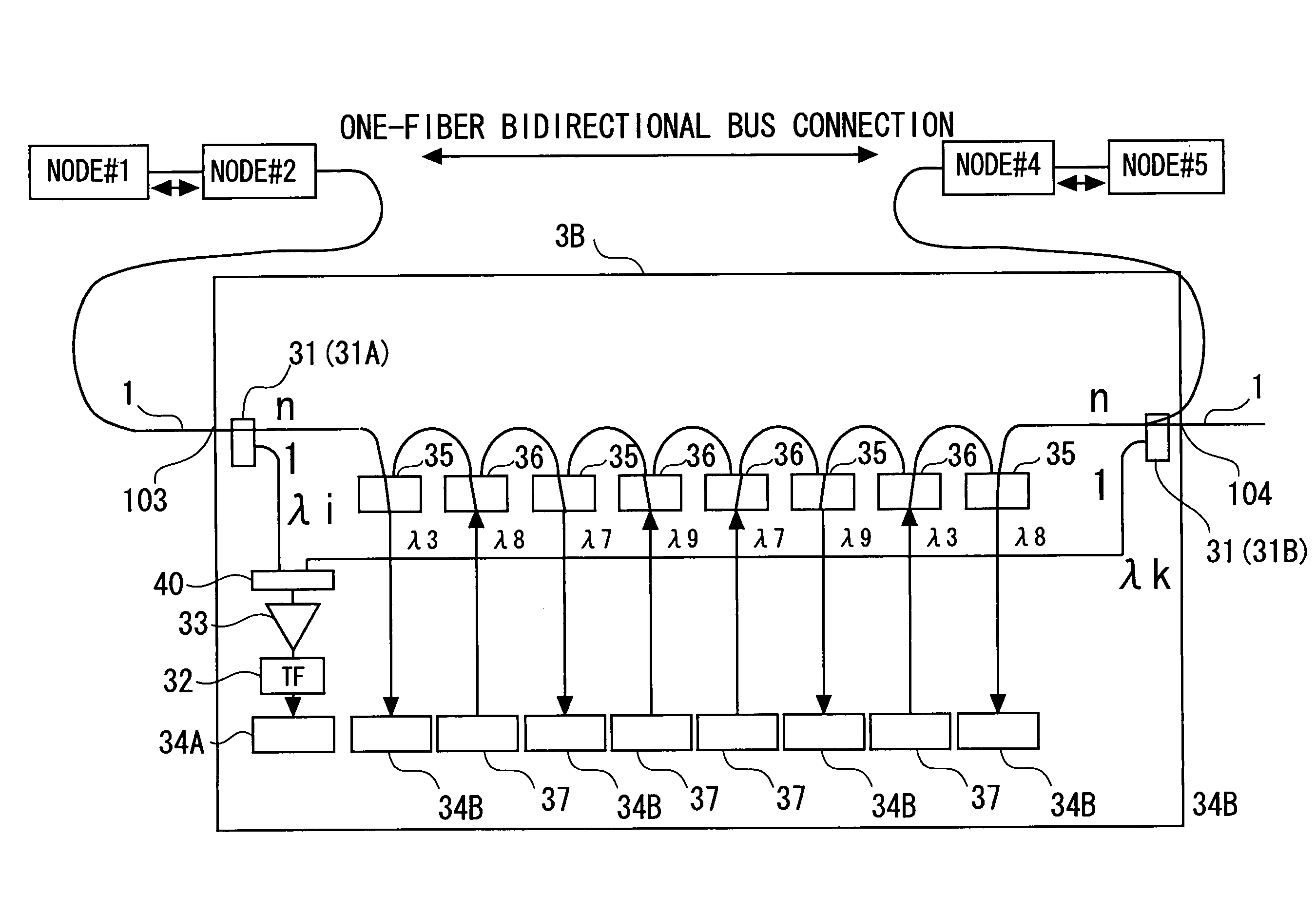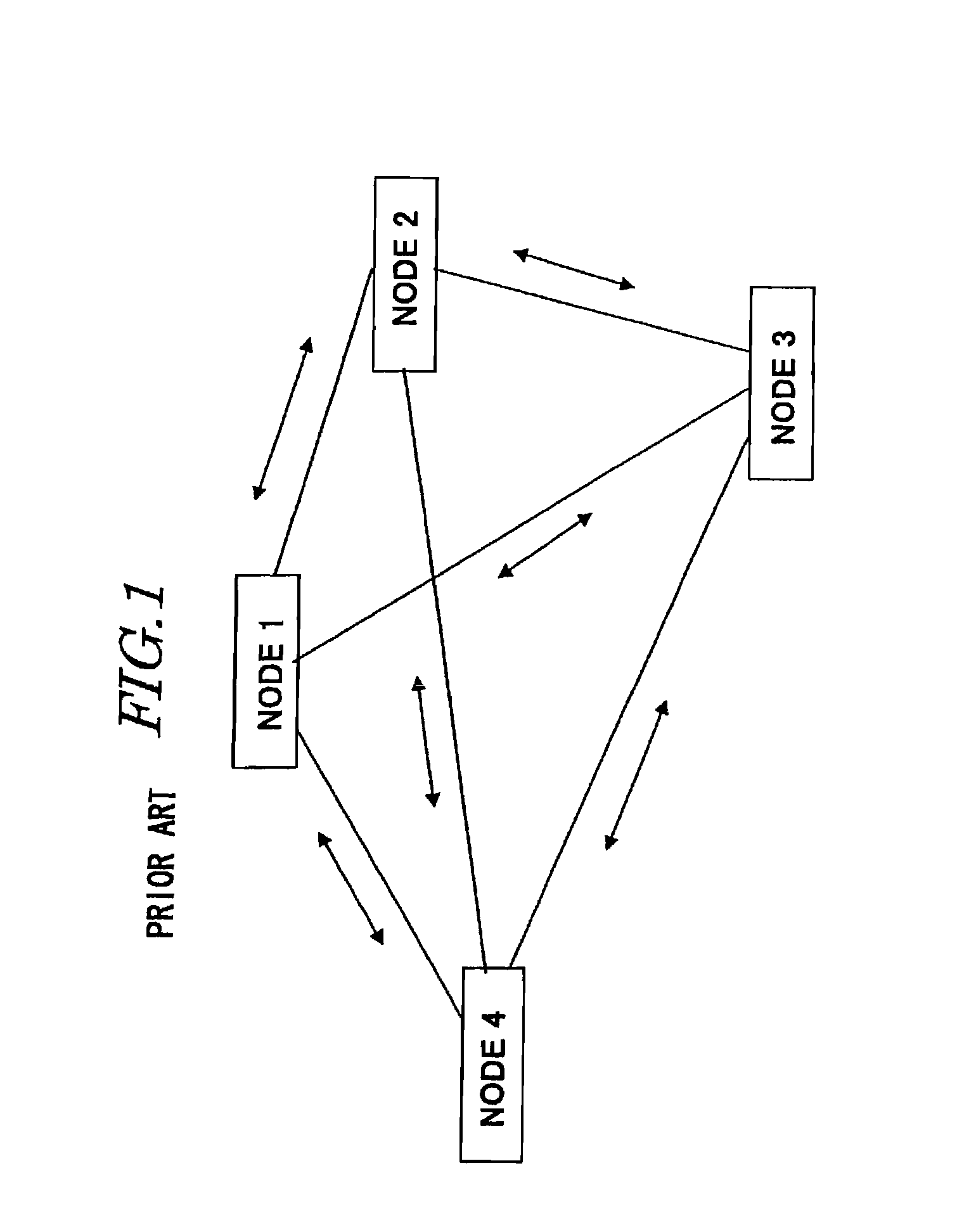Optical network and optical add/drop apparatus
a technology which is applied in the field of optical network and optical add/drop apparatus, can solve the problems of high cost, complex node architecture, and large scale of devices that structure nodes, and achieve the effect of simple and compact configuration, low cost and low cos
- Summary
- Abstract
- Description
- Claims
- Application Information
AI Technical Summary
Benefits of technology
Problems solved by technology
Method used
Image
Examples
first embodiment
[0062]A first embodiment of the invention will be explained with reference to the drawings in FIGS. 5 through 12. Herein, the embodiment of the invention will be discussed by exemplifying an optical ring network. FIG. 5 is a view of a configuration of the optical ring network according to the embodiment. As shown in FIG. 5, the optical ring network includes an optical network medium (which will hereinafter be called a fiber 1) that builds up a ring-configured connection, through which an optical signal flows unidirectionally, and a plurality of nodes #1-#N connected to the fiber 1. In the case of individually identifying each node, the nodes are referred to as the node #1, the node #2, etc. and are, when generically termed, simply called the node. The node includes an optical add / drop multiplexer (multi / demultiplexer) 3 corresponding to an optical add drop apparatus that adds the optical signal to the fiber 1 or demultiplexes the optical signal from the optical fiber 1 (see FIG. 6)....
second embodiment
[0121]A second embodiment of the invention will be described with reference to FIGS. 13 through 15. The first embodiment has shown the example, wherein the node on the optical ring network is constructed by use of the plurality of fixed wavelength drop filters 35, the plurality of fixed wavelength add filters 36 and one or more optical tunable filters 32. Further, in the first embodiment, the optical signal of the wavelength that is received by each node on the optical ring network is reused, and the multicast distribution is actualized by the optical signal of the wavelength used for the communication with the node existing in the remotest position in topology of the optical ring network from the node concerned.
[0122]In the second embodiment, an optical network taking a bus type is configured by use of the plurality of fixed wavelength drop filters 35, the plurality of fixed wavelength add filters 36 and one or more optical tunable filters 32. In this case, unlike the node configur...
third embodiment
[0157]A third embodiment of the invention will be described with reference to FIGS. 16 through 18. The first embodiment has exemplified how the optical ring network is configured, in which the optical add / drop multiplexers 3 including the fixed wavelength drop filters 35 and the fixed wavelength add filters 36 serve as the nodes.
[0158]By the way, in the case of altering the network in a way that adds or removes the nodes, it is required that the fixed wavelength drop filters 35 and the fixed wavelength add filters 36 be added to all the nodes (the removal is not necessarily required). In this case, maintainability is improved by taking a unit form (which is also called a module form), wherein the respective filters 35, 36 are set paired. Such being the case, the third embodiment will exemplify an example of constructing the optical add / drop multiplexer 3 by using the paired units of the fixed wavelength drop filters 35 and the fixed wavelength add filters 36. Other configurations an...
PUM
 Login to View More
Login to View More Abstract
Description
Claims
Application Information
 Login to View More
Login to View More - R&D
- Intellectual Property
- Life Sciences
- Materials
- Tech Scout
- Unparalleled Data Quality
- Higher Quality Content
- 60% Fewer Hallucinations
Browse by: Latest US Patents, China's latest patents, Technical Efficacy Thesaurus, Application Domain, Technology Topic, Popular Technical Reports.
© 2025 PatSnap. All rights reserved.Legal|Privacy policy|Modern Slavery Act Transparency Statement|Sitemap|About US| Contact US: help@patsnap.com



